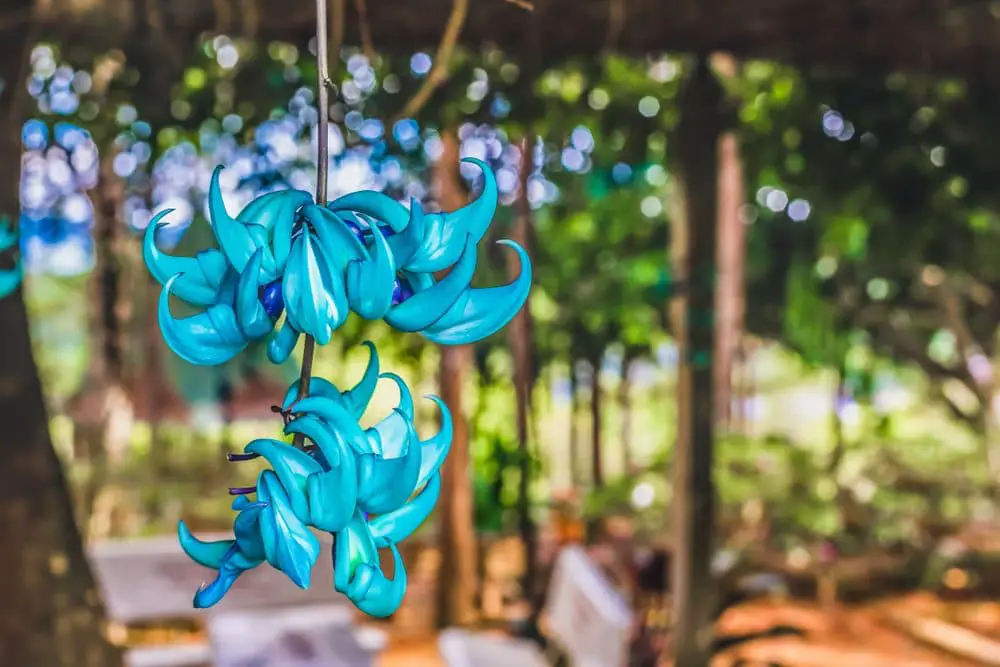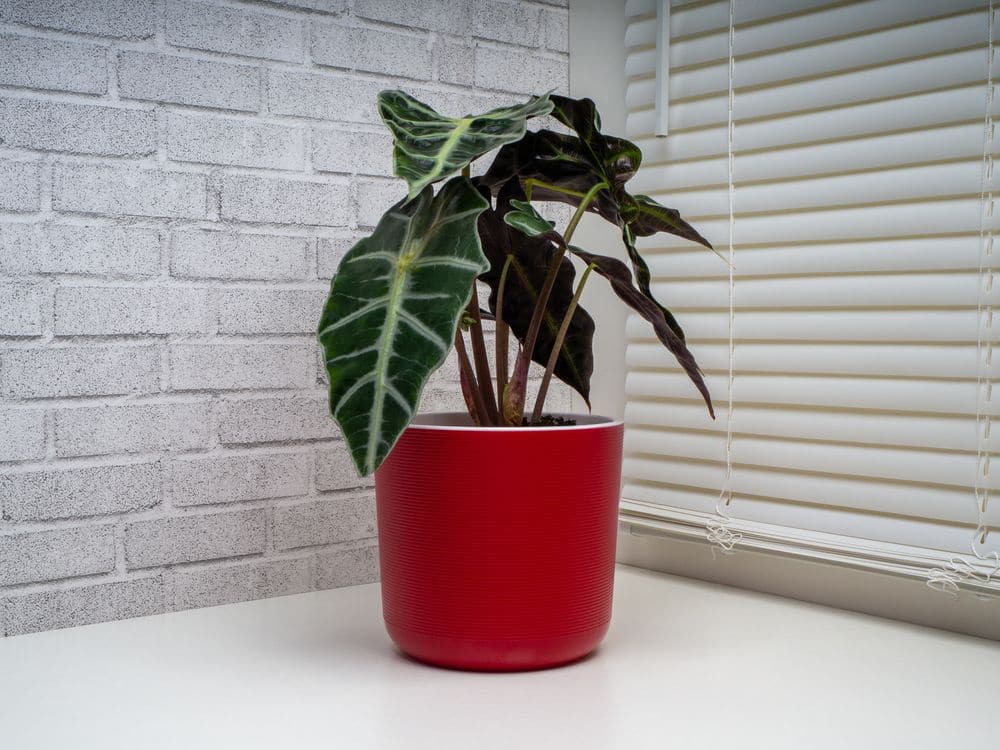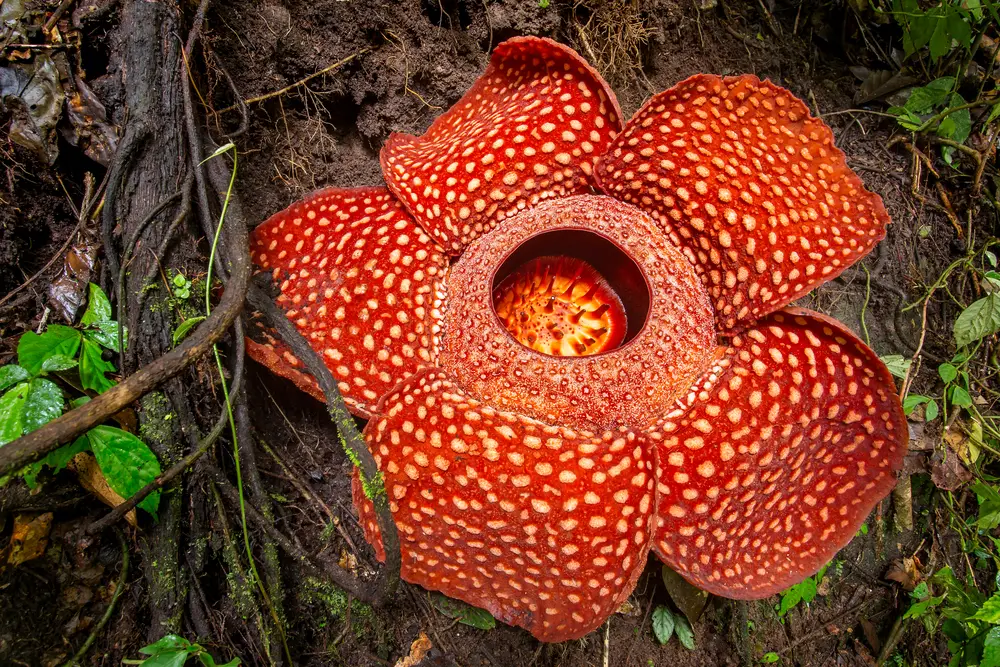The Philippines, an archipelago in Southeast Asia in the Pacific Ocean, has a tropical climate. Being close to the equator, it has a humid and hot climate with some rain creating the right habitat for tropical plants.
Discover, with us, some of the rare plants of the Philippines.
Seven of the rarest plants of the Philippines are: Jade Vine, Kabantigi, Rafflesia, Philippine Teak, Balakat, Kris Plant, and the Cebu Cinnamon Tree. Most of these plants are indigenous to the Philippines. They are unusual, exotic, exquisite and endemic in the lush islands and mainland of the Republic.
Rare Plants of the Philippines
Here are some of the rare plants that are indigenous to and endemic in the Philippines. These plants have become rare because of the destruction of their habitats.
They’ve consequently become threatened because many gardening wholesalers collect them for rock gardening and bonsai arrangements.
1. Jade Vine

The Philippine Jade is native to the Philippines. It is also known as the Emerald Vine and known locally as Tayabak.
The Jade Vine (Strongylodon Macrobotrys) is an evergreen. It has a woody vine that can grow up to 70 feet long.
The Jade Vine flowers are either a lovely aquamarine or turquoise and have a claw-like shape. The flowers can reach up to 5 inches long. They typically bloom in early spring through summer.
The Jade Vine only thrives in tropical rainforests with rich biodiversity such as in the Philippines. This vine grows best in moist, alkaline, and well-drained soil. It loves full sun to partial shade. It cannot tolerate drought or cold temperatures.
Eight species of Jade Vine are endemic to the Philippines. It is one of the rarest and most awesome flowers in the world.
2. Kabantigi
The Kabantigi (Pemphis Acidula) is a small shrub or tree. It is native to the Philippines. It does not go dormant so, it can grow up to 33 feet tall. It comes with dense and low-lying branches.
The shape and rugged character of the trunks of the Kabantigi are due to the big waves and strong winds that hit the reefs knocking over the reefs during the typhoon season (August to December) in the Philippines.
During summer (around March), the winds change and the Kabantigi will grow upright again.
The Kabantigi flowers bloom during the spring. The leaves are thick and small and sometimes become round with the daily spraying with seawater.
It’s a very tough tree. It can endure the harsh forces of nature. It can generate new buds and roots quickly making them grow fast.
They are bonsai trees. Woodcarvers marvel at the wood of this tree because it is heavy and has a natural twisted shape.
This plant can be found along the coastal rock areas.
3. Rafflesia
The Rafflesia Consueloae can only be found in the Philippines. It only thrives in two sites in the Pantabangan Watershed, a conservation area in the Pampanga River, Nueva Ecija, Philippines.
Rafflesia is the world’s largest flower. Its diameter can reach up to 5 feet. In some species such as the Rafflesia arnoldii, the flower can be 3 feet in diameter and can weigh up to 22 pounds.
The Rafflesia is a parasitic flowering plant from the family Rafflesiaceae.
The species has huge flowers with buds rising from the ground – directly from the lower stems of its host plant. It does not have any visible stem, roots, or leaves.
It gets nutrients and water from the host plant.
The only part of the plant that is visible from the host plant is the flower with five petals.
When in bloom the Rafflesia emits a foul odor, similar to that of rotting flesh. This disgusting odor attracts insects to pollinate the host plant.
4. Philippine Teak
The Philippine Teak (Tectona philippinensis) is one of the rare plants of the Philippines. It is from the family Verbenaceae.
This small tree is confined to only two areas in the Philippines. It produces hardwood timber making it important to the locals.
This endemic forest tree species can grow up to 50 to 80 feet tall with a diameter of about 20 inches. Its leaves which are about 5 inches long and 2 inches wide are green and pale under with rough surface.
It produces bright purple blooms.
The fruits of the Philippine Teak are small and enclosed in the large calyx (green leafy sepals surrounding a young blossom) with a bony endocarp (developing seed) and thin exocarp (outer skin of the fruit).
The light-yellow wood of the Philippine Teak is heavy and hard with a 0.710 density. It has a slightly wavy grain and a glossy and fine texture.
5. Balakat
The Balakat (Ziziphus talanai) is a species of tree that is part of the Rhamnaceae family. This tree is endemic to the Philippines, specifically to the Luzon and Visayas Islands. It can be found in the Philippinean Limestone Forest ecoregion.
It is a timber species scattered in primary and secondary lowland forests with an altitude of up to about 3,000 feet. The Balakat tree can grow up to 100 tall and 40 inches in diameter.
In Antique Province in the Visayas Island, the bark of the Balakat is used to treat diseases such as ringworm and urinary tract infections because of its antimicrobial properties.
6. Kris Plant

The Kris Plant (Alocasia sanderiana), also known as the Sander’s Alocasia, is a tropical perennial that can grow up to 2 feet long.
It is part of the family Araceae. It is endemic to the Philippines, especially on the island of Northern Mindanao.
The Kris Plant comes with a single or a few v-shaped leaves with waved edges. Its large leaves (12 to 16 inches long and 6 to 8 inches wide) have white to yellowish veins and the underside is reddish or purple.
White spathe flowers can sometimes appear during summer in the Philippines.
7. Cebu Cinnamon Tree
The Cebu Cinnamon Tree (Cinnamomum cebuense, or locally known as Kaningag, is a cinnamon species endemic to Cebu Island in the Philippines. Several of these trees have been found in Siquijor Island and the Camote Islands.
Eighteen of the 25 Cinnamomum species in the country are endemic.
The Cebu Cinnamon tree is a medium-sized tree. It is highly prized for its culinary and medicinal uses.
The bark of the Cebu Cinnamon Tree (boiled with water or chewed directly) is used by the locals to treat stomach aches. The leaves are the source of spice for cooking.
The Philippines has three seasons: the rainy season, the dry season, and the cool and rainy season. These seasons are ideal for a wide variety of plants.
The tropical rain forests in the Philippines are something you will not find in other places on earth. Look at the country from a different perspective and get to know some of the rare plants of the Philippines.
Biodiversity of Plants in the Philippines
Plants are important in the biodiversity of a region. They are vital to the ecosystem and essential to both humans and wildlife.
There are many rare plants in the Philippines. There are over 10,000 species of plants native to the Philippines such as beautiful flowers, vines, and trees and more than half of them are endemic or only found in the Philippines and nowhere else on earth.
About 5% of the plant species on earth are in the Philippines. The country ranks 5th in the world for the greatest number of plant species within the country.
Deforestation has destroyed much of the rainforests in the Philippines . There are, however, still some places in the country where visitors can marvel at its captivating ecosystem.
. There are, however, still some places in the country where visitors can marvel at its captivating ecosystem.
Some of the original jungles in the Philippines have been preserved in the islands of Mindanao, Bohol, and Palawan. In these places, you will find several rare plants of the Philippines endemic to the country.
Final Thoughts on Rare Plants of the Philippines
Several rare plants in the Philippines have been endemic because of the tropical climate in the country.
Many of them, sadly, have been classified as endangered due to deforestation.
Read More:
21 Stunning Calathea Varieties You Will Love – Plus Care Guide
How to Grow Marigolds from Seed
How to Grow and Care for the Blue Star Fern- Full Guide! 

